MIG welding uses a continuous wire electrode to join metals․ Wire speed and voltage are critical for achieving high-quality welds․ This guide provides a detailed setup chart to optimize these parameters․
1․1 What is MIG Welding?
MIG (Metal Inert Gas) welding, also known as GMAW (Gas Metal Arc Welding), is a process that uses a continuous wire electrode and an inert gas to shield the arc․ It is highly versatile, capable of welding various metals, including steel, aluminum, and stainless steel․ The process involves feeding a wire through a welding gun, creating an electric arc that melts the wire and joins the base metals․ Shielding gases like argon or helium protect the weld from contamination․ Known for its high speed, precision, and clean results, MIG welding is widely used in automotive, construction, and manufacturing industries․
1․2 Importance of Wire Speed and Voltage in MIG Welding
Wire speed and voltage are crucial in MIG welding as they determine weld quality․ Wire speed affects the rate of filler metal deposition, while voltage influences arc length and heat input․ Proper settings ensure adequate penetration, avoid defects like undercut or porosity, and maintain consistent weld appearance․ Incorrect parameters can lead to overheating or insufficient fusion․ A wire speed and voltage chart serves as a reference, providing optimal settings for different materials and thicknesses, ensuring efficient and defect-free welding processes across various applications and industries․
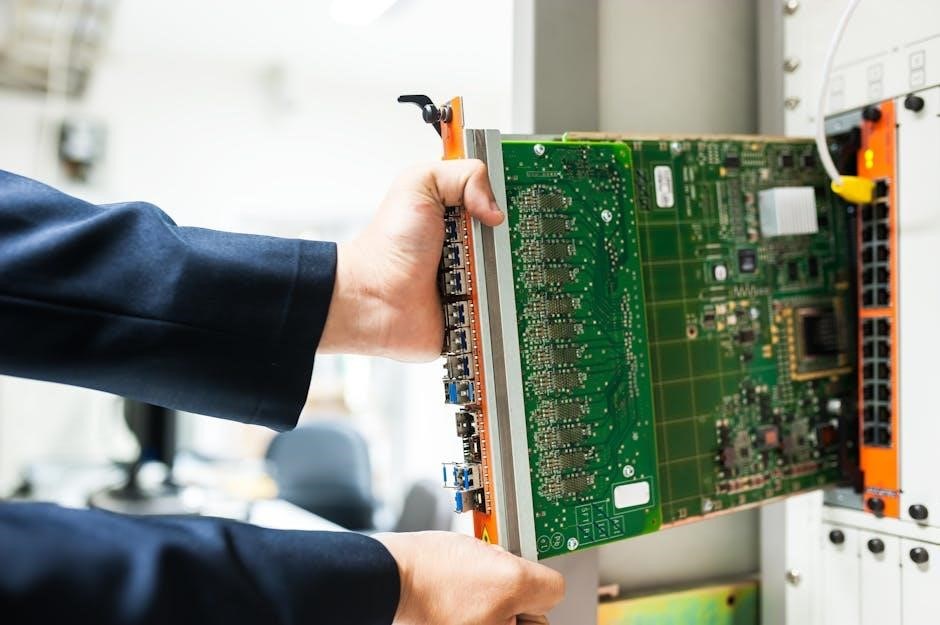
Factors Affecting Wire Speed and Voltage
- Material thickness impacts heat input, requiring voltage adjustments for proper penetration․
- Wire diameter and shielding gas influence arc characteristics and current flow․
- Duty cycle affects operational limits, ensuring equipment efficiency and longevity․
2․1 Material Thickness and Its Impact on Welding Parameters
Material thickness significantly influences MIG welding parameters․ Thicker materials require higher voltage and wire speed to ensure proper penetration and fusion․ For example, welding 1/4-inch steel demands more power than 1/8-inch steel․ Using a wire speed and voltage chart helps determine the correct settings, preventing defects like lack of fusion․ Adjustments may also involve changing the shielding gas or wire diameter to maintain consistent weld quality across varying material thicknesses, ensuring optimal results in both thin and thick-section welding applications․
2․2 Wire Diameter and Shielding Gas Type
Wire diameter and shielding gas type are crucial factors in MIG welding․ A larger wire diameter increases current density, requiring higher voltage for consistent arc stability․ Shielding gas composition, such as 75% Argon/25% CO2, affects arc characteristics and weld penetration․ The combination of wire diameter and gas type must be matched to the material being welded․ A wire speed and voltage chart provides specific recommendations for different wire diameters and gas mixtures, ensuring optimal weld quality and minimizing defects like porosity or lack of fusion․
2․3 The Role of Duty Cycle in Welding
Duty cycle is the percentage of time a welder operates at maximum current within a 10-minute period․ It is crucial for maintaining equipment longevity and preventing overheating․ A higher duty cycle allows for longer continuous welding but requires adequate cooling․ Adjusting wire speed and voltage must consider the duty cycle to avoid exceeding the welder’s capacity․ For example, high-speed welding with thick materials may require lowering the duty cycle to prevent overheating․ Understanding duty cycle is essential for optimizing weld quality and ensuring safe, efficient operation of MIG welding equipment․
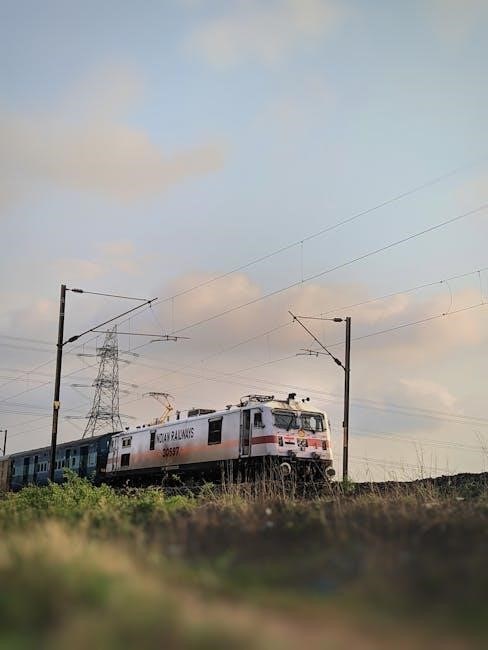
Understanding MIG Welding Parameters
Wire feed speed, voltage, and travel speed are key parameters in MIG welding․ These settings control heat input, penetration, and weld quality, requiring precise adjustment for optimal results․
3․1 Wire Feed Speed (WFS) and Its Relationship with Current
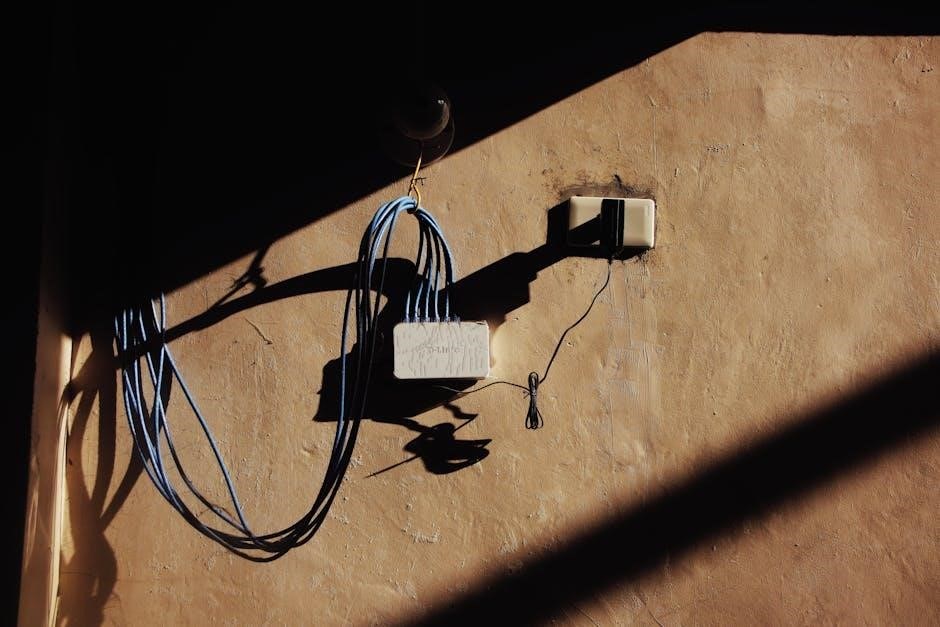
Wire feed speed (WFS) directly influences welding current in MIG welding․ Increasing WFS raises current, affecting heat input and penetration․ Proper WFS ensures consistent arc and weld quality, avoiding defects․
3․2 Arc Voltage and Its Effect on Weld Penetration
Arc voltage in MIG welding determines weld penetration depth and width․ Higher voltage increases penetration but risks undercut or porosity if excessive․ Proper voltage balances heat input and material flow, ensuring optimal fusion․ Incorrect settings can lead to defects like lack of penetration or excessive spatter․ Using a wire speed and voltage chart helps match voltage to material thickness and wire type․ Adjustments may be needed for different shielding gases or joint designs․ Maintaining the correct voltage ensures consistent weld quality and prevents common defects, making it a critical parameter in MIG welding processes․
3․3 Travel Speed and Its Interaction with Wire Feed Speed
Travel speed significantly impacts weld quality and interacts closely with wire feed speed (WFS)․ Increasing travel speed reduces heat input, potentially decreasing penetration depth․ Conversely, slower travel speeds increase heat input, risking burn-through or distortion․ Wire feed speed must be adjusted proportionally to maintain consistent fusion and avoid defects like lack of fusion or excessive spatter․ Proper synchronization ensures optimal weld penetration and cosmetic appearance․ Using a wire speed and voltage chart helps determine ideal travel speeds for specific materials and thicknesses, ensuring precise control over the welding process and achieving desired results effectively․ Balancing these parameters is key to high-quality welds․
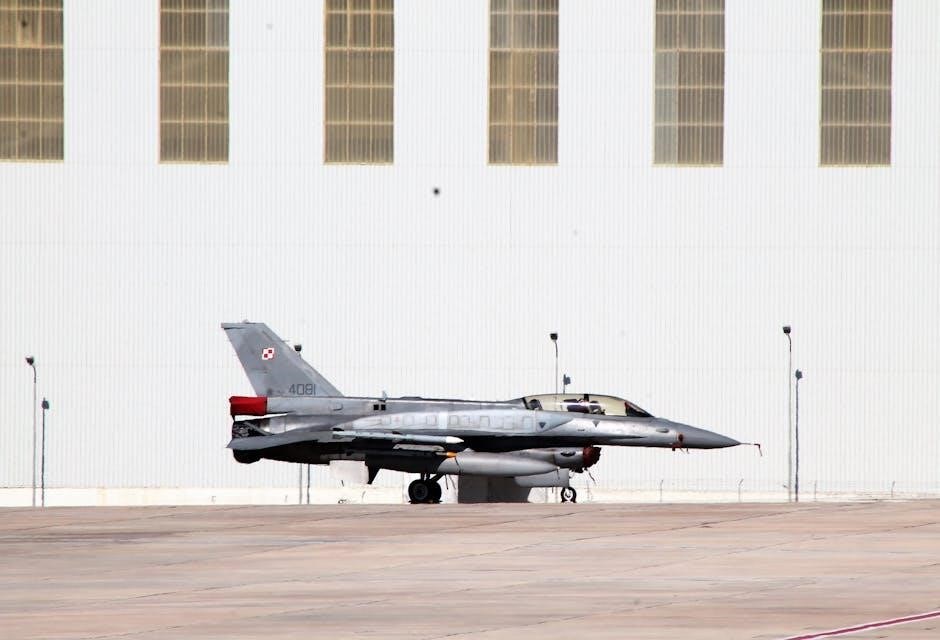
MIG Welding Wire Speed and Voltage Chart
A MIG welding wire speed and voltage chart provides optimal settings for various materials and thicknesses, ensuring proper fusion and minimizing defects․ Refer to it for precise adjustments․
4․1 How to Read a Wire Speed and Voltage Chart
To interpret a MIG welding wire speed and voltage chart, start by identifying the material thickness and wire diameter․ Locate the corresponding voltage range, typically between 15V to 24V, and wire speed in IPM or m/min․ Match these to your setup for optimal weld penetration and quality․ Adjustments may be needed based on specific equipment or conditions․ Always refer to the manufacturer’s guidelines for precise settings to ensure consistency and avoid defects․ Proper settings prevent issues like undercut or porosity, enhancing overall weld integrity and appearance․
4․2 Recommended Settings for Different Materials
For steel, typical settings range from 15V to 24V with wire speeds of 100-400 IPM․ Aluminum requires lower voltage, around 15V-20V, with similar wire speeds․ Stainless steel often uses slightly higher voltages, 18V-24V, to prevent oxidation․ Adjustments may vary based on material thickness and desired weld penetration․ Always consult a specific chart for precise settings tailored to your project, ensuring optimal results and minimizing defects․ These recommendations serve as a baseline, allowing fine-tuning for individual setups and conditions to achieve consistent, high-quality welds across various materials․
4․3 Adjustments for Various Wire Types (Solid vs․ Flux-Cored)
Solid wires typically require lower voltage and moderate wire speeds for consistent welds․ Flux-cored wires, which generate shielding gas when burned, often need higher voltage to maintain stable arcs․ For thin materials, solid wires may use 15-18V with 100-200 IPM, while flux-cored wires might require 18-22V at similar speeds․ Thicker materials demand higher settings, with flux-cored wires potentially needing 22-24V and 250-400 IPM․ Adjustments ensure proper penetration and prevent defects like porosity or lack of fusion․ Always refer to the chart for specific wire-type recommendations to optimize weld quality and adapt to material thickness and joint design․

Setting Up Your MIG Welder
Setting up your MIG welder involves choosing the right wire diameter, selecting the appropriate shielding gas, and fine-tuning voltage and wire feed speed for optimal results․ Always refer to the chart for specific settings based on material thickness and type․ Proper setup ensures consistent weld quality and minimizes defects, making the process efficient and reliable for various welding projects․
5․1 Choosing the Right Wire Diameter
Choosing the right wire diameter is essential for achieving optimal weld quality․ Wire diameter affects current, heat input, and penetration․ Thicker wires (e․g․, 1․2mm or 1․6mm) are suitable for thicker materials and higher current applications, while thinner wires (e․g․, 0․6mm or 0․8mm) are ideal for thinner materials and precision work․ The type of shielding gas and material being welded also influence the wire selection․ Always consult a MIG welding wire speed and voltage chart to match the wire diameter with the recommended settings for your specific application․ Proper wire selection ensures consistent weld penetration and minimizes defects, leading to better overall results and efficiency in the welding process․
5․2 Selecting the Appropriate Shielding Gas
Selecting the right shielding gas is crucial for achieving high-quality welds․ Common options include pure CO2, 100% Argon, or a mix like 75% Argon/25% CO2․ CO2 provides deep penetration but can cause more spatter, while Argon offers cleaner welds and better arc stability․ The choice depends on the material being welded, such as steel, stainless steel, or aluminum․ Referencing a MIG welding chart helps determine the optimal gas type for specific materials and thicknesses․ Proper shielding gas selection enhances weld quality, reduces porosity, and ensures better fusion․ Always match the gas type to your wire and material for consistent results․
5․3 Fine-Tuning Voltage and Wire Feed Speed
Fine-tuning voltage and wire feed speed is essential for achieving optimal weld quality․ Wire feed speed directly affects the welding current, while voltage controls the arc’s heat input․ Start with settings from a MIG welding chart, then adjust based on material thickness and visual inspection․ Higher wire speeds increase current, which can improve penetration but may risk burn-through․ Voltage adjustments influence the arc’s shape and heat distribution․ For thicker materials, higher voltage and speed settings are often required․ Synergic MIG welders automatically sync these parameters, but manual adjustments may still be needed for specific results․ Always reference a wire speed and voltage chart for precise setup guidance․
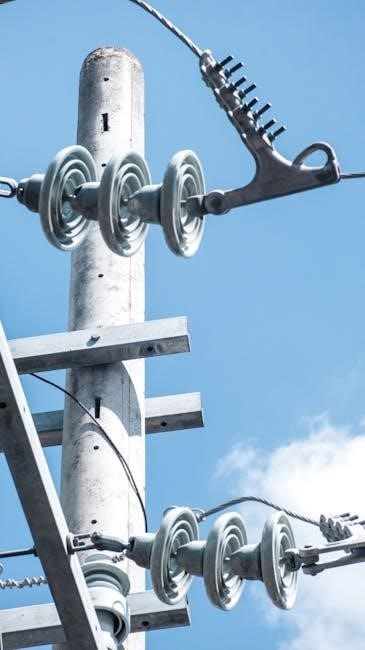
Advanced Welding Techniques
Advanced methods like synergic MIG, pulse welding, and high-speed cold wire welding enhance precision and efficiency․ These techniques optimize wire speed and voltage for superior weld quality and control․
6․1 Synergic MIG Welding and Automatic Settings
Synergic MIG welding employs advanced technology to automatically adjust wire speed and voltage based on material type and thickness․ This mode ensures optimal weld parameters without manual calculations․ By eliminating guesswork, it enhances consistency and reduces defects․ The system analyzes input parameters and fine-tunes settings for ideal results․ This feature is particularly useful for novice welders, as it streamlines the setup process․ Additionally, synergic MIG welding reduces the need for constant adjustments, improving efficiency in high-volume production environments․ It’s a key innovation in modern welding, offering precision and ease of use․
6․2 Pulse MIG Welding for Better Control
Pulse MIG welding offers enhanced control by modulating arc voltage and current․ It provides consistent weld penetration and reduces heat input, minimizing distortion․ This technique is ideal for thin materials and intricate joints․ By adjusting pulse frequency and duty cycle, welders can optimize results․ Pulse MIG welding reduces spatter and improves bead appearance․ It is suitable for both manual and automated processes, offering versatility․ This method is particularly effective for high-precision applications, ensuring superior weld quality and repeatability․ It’s a valuable tool for achieving consistent results in demanding welding scenarios․
6․3 High-Speed Welding with Cold Wire
High-speed welding with cold wire enhances productivity by increasing deposition rates․ This technique uses a non-heated wire, maintaining cooler temperatures․ It reduces thermal distortion and is ideal for thin materials․ Cold wire welding minimizes heat input, preventing warping․ Adjustments to wire speed and voltage are crucial for optimal results․ Higher wire speeds compensate for lower heat, ensuring consistent fusion․ This method is suitable for automated systems, offering precision and efficiency․ It’s widely used in industries requiring rapid, high-quality welds without excessive heat․ Proper parameter setup ensures durability and aesthetics in high-speed applications․
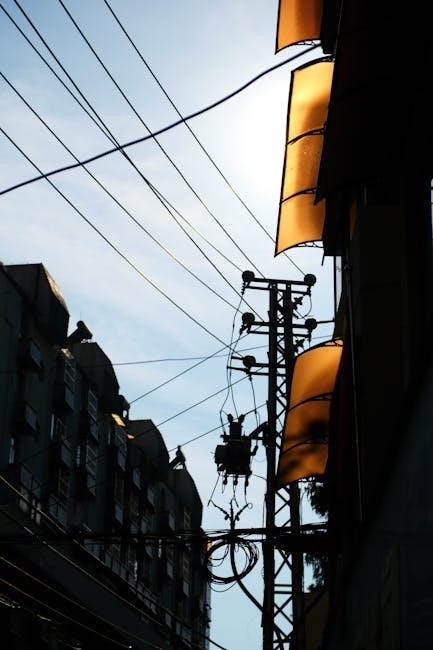
Troubleshooting Common Welding Defects
Troubleshooting common welding defects involves identifying issues like undercut, porosity, or lack of fusion․ Incorrect wire speed and voltage settings are often the root cause․ Adjusting these parameters ensures proper weld quality and avoids rework․
7․1 Effects of Incorrect Wire Speed and Voltage
Incorrect wire speed and voltage can significantly impact weld quality, causing defects like undercut, porosity, and lack of fusion․ High voltage increases heat input, potentially leading to burn-through or warping, especially in thinner materials․ Conversely, low voltage may result in insufficient penetration, leaving the weld weaker․ Additionally, incorrect settings can affect the shielding gas’s effectiveness, introducing porosity․ These issues not only compromise the weld’s structural integrity but also increase production costs due to the need for repairs․ Proper setup using a wire speed and voltage chart is crucial to avoid these problems and ensure durable, high-quality welds always․
7․2 Addressing Issues Like Undercut and Porosity
Undercut and porosity are common defects in MIG welding, often caused by incorrect wire speed or voltage․ Undercut occurs when the weld fails to fully penetrate the edges, while porosity appears as tiny bubbles in the weld․ To address these, adjust wire speed and voltage according to the chart to ensure proper heat input and penetration․ Additionally, check shielding gas flow and cleanliness of the material․ Porosity can also result from contamination or moisture, so maintaining a clean welding environment is crucial․ Correcting these issues requires precise parameter tuning and adherence to recommended settings for optimal weld quality and durability․
7․3 Adjusting Parameters to Achieve Desired Weld Quality
Adjusting wire speed and voltage is essential for achieving desired weld quality․ If the weld is too shallow, increase voltage slightly․ If it’s too wide, decrease voltage․ Wire speed directly affects current, so higher speed increases current, potentially causing overheating․ Conversely, too slow a speed can result in a lack of fusion․ Referencing a wire speed and voltage chart ensures proper settings for material thickness and type․ Fine-tuning these parameters balances penetration, bead profile, and overall weld appearance․ Regular monitoring and adjustments are key to maintaining consistent, high-quality welds across various projects and materials․

Safety Considerations
Ensure proper PPE, including helmets and gloves․ Maintain correct voltage and current settings to prevent overheating․ Keep the welding area well-ventilated and free from flammable materials․
8․1 Importance of Proper Voltage and Current Settings
Proper voltage and current settings are crucial for safe and effective MIG welding․ Incorrect settings can lead to overheating, electrical hazards, or poor weld quality․ High amperage, especially with metal-cored wires, may result in dull, flaky welds․ Conversely, low voltage can cause incomplete fusion․ Always refer to the MIG welding wire speed and voltage chart to ensure optimal parameters for your material and wire type․ This prevents equipment damage and ensures a stable arc, reducing the risk of accidents and improving weld consistency․ Proper settings also minimize heat input, reducing warping and distortion in the workpiece․
8․2 Personal Protective Equipment (PPE)
Personal Protective Equipment (PPE) is essential for ensuring safety during MIG welding․ A welding helmet with a UV-protected lens protects eyes from harmful radiation and flying sparks․ Heat-resistant gloves prevent burns from hot metal and electrical currents․ Fire-resistant clothing, including long sleeves and pants, shields skin from sparks and spatter․ Steel-toe boots and safety glasses provide additional protection․ Proper ventilation is crucial to avoid inhaling welding fumes․ Keeping a fire extinguisher nearby is also recommended․ Adhering to these safety guidelines minimizes risks and ensures a safe working environment for welders․
8․3 Ventilation and Fire Safety
Proper ventilation is crucial during MIG welding to prevent inhalation of harmful fumes and particles․ A well-ventilated workspace ensures the removal of welding fumes, reducing health risks․ Fire safety measures are equally important, as sparks and spatter can ignite flammable materials․ Keep combustible items away from the welding area and ensure a fire extinguisher is nearby․ Regularly inspect the workspace for potential fire hazards․ Adhering to these safety practices minimizes risks and ensures a secure environment for welding operations․ Proper ventilation and fire preparedness are essential for protecting both the welder and the surrounding area․

Maintenance and Calibration
Regular maintenance ensures optimal performance of MIG welding equipment․ Clean the welding gun, check wire feed rollers, and calibrate voltage and wire speed for accuracy․
9․1 Regular Maintenance of MIG Welding Equipment
Regular maintenance is crucial for ensuring the longevity and performance of MIG welding equipment․ This includes cleaning the welding gun, inspecting and replacing worn-out consumables like nozzles and contact tips, and lubricating moving parts․ Additionally, checking the wire feed system for proper alignment and tension prevents issues like wire feeding problems․ It is also important to ensure the shielding gas system is free from leaks and contamination․ Following a consistent maintenance schedule helps maintain consistent welding parameters, as outlined in the wire speed and voltage chart, ensuring high-quality welds and reducing downtime․
9․2 Calibrating Wire Feed Speed and Voltage
Calibrating wire feed speed and voltage ensures accurate welding parameters․ Begin by setting the wire feed speed according to the chart, then adjust the voltage to achieve the desired arc characteristics․ Use a voltmeter to measure arc voltage and ensure it matches the recommended settings․ Calibration should be performed periodically and whenever changing wire types or materials․ Proper calibration prevents defects like porosity or lack of fusion, ensuring consistent weld quality․ Refer to the MIG welding wire speed and voltage chart for specific guidelines tailored to your equipment and materials․
9․3 Troubleshooting Common Equipment Issues
Identify and resolve equipment issues promptly to maintain welding efficiency․ Common problems include inconsistent wire feed speed, voltage fluctuations, and poor arc stability․ Check for worn or clogged liners, damaged torch components, or incorrect wire spooling․ Ensure proper gas flow and clean connections․ Refer to the MIG welding wire speed and voltage chart to verify settings․ If issues persist, consult the user manual or contact a professional․ Regular maintenance, such as replacing contact tips and cleaning the feeder, helps prevent downtime and ensures optimal performance․ Addressing these issues early avoids costly repairs and enhances weld quality․
Mastering MIG welding requires understanding wire speed and voltage․ Using a chart ensures optimal weld quality, safety, and efficiency․ Always refer to the chart for best results․
10․1 Summary of Key Points
10․2 Importance of Using a Wire Speed and Voltage Chart
A wire speed and voltage chart is indispensable for MIG welding․ It provides specific guidelines for different materials and wire types, ensuring optimal weld quality․ By referencing the chart, welders can avoid common defects caused by incorrect settings․ The chart helps maintain consistency across projects and reduces trial-and-error adjustments․ It also serves as a quick reference for novice welders, guiding them toward professional results․ Ultimately, using a chart enhances efficiency, reduces waste, and ensures safer welding practices by minimizing the risk of errors․
10․3 Final Tips for Optimal MIG Welding Results
For optimal MIG welding, always refer to a wire speed and voltage chart tailored to your equipment and materials․ Ensure proper shielding gas flow and maintain a clean workpiece․ Fine-tune settings based on material thickness and joint design․ Practice consistent travel speed to avoid overheating or lack of penetration․ Regularly inspect and maintain your equipment, including the wire feeder and torch․ Use high-quality consumables to prevent defects․ Stay alert to voltage and current adjustments, as small changes can significantly impact weld quality․ Lastly, leverage synergic modes for automatic parameter optimization, enhancing efficiency and consistency in your work․

